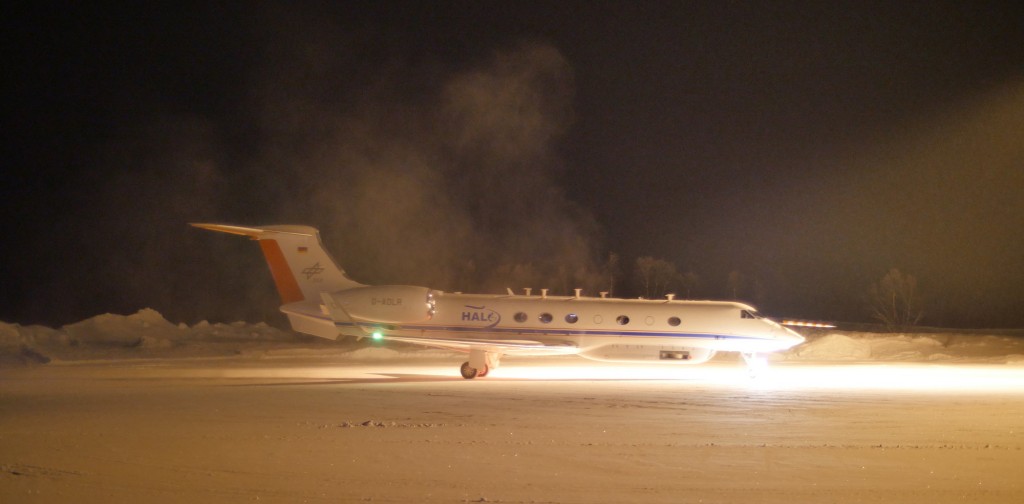After a successfull 9 hours flight HALO arrived at the Arena Artica in Kiruna yesterday. The flight was quite challenging for the aircraft and all the scientific instruments. Nevertheless lots of scientific interesting data has been accumulated. The instruments from the Research Center Jülich operated for the first time during this campaign without any problems.

View of the sunset from HALO. Above the sun Polar Stratospheric Clouds can be seen. Picture by Erik Kretschmer, KIT.
In these cold temperatures Polar Stratospheric Clouds (PSCs) can form. In the stratosphere the water vapour concentration is very low. Therefore common water vapour clouds do not exist. If the temperatures approach -80°C nitric or sulfuric acid particles freeze and build these clouds. PSCs are a source of ozone depletion in the Arctic and therefore can increase the formation of the Ozone Hole.
After 9 hours HALO finally landed at Kiruna airport. The picture shows HALO approaching the Arena Arctica Hangar and dispersing snow with its engines.
Just before the landing of HALO some colleagues launched a weather ballon to get a detailed meteorological profile. These ballons are started at least twice a day here in Kiruna. Other stations on the same latitude circle in Norway and Finland start ballons at the same times to compare the data and derive gravity waves from the temperature and wind profils measured by the sondes.




No Comments
Be the first to start a conversation